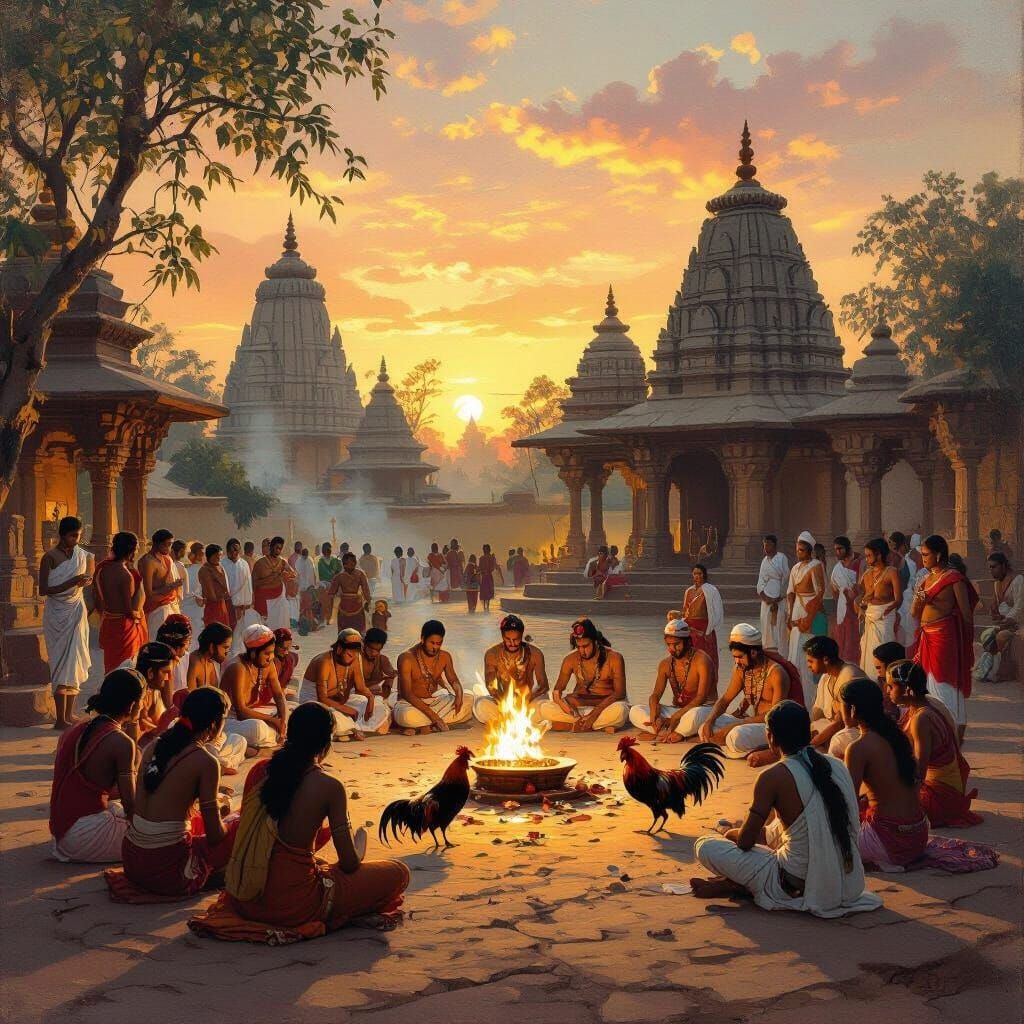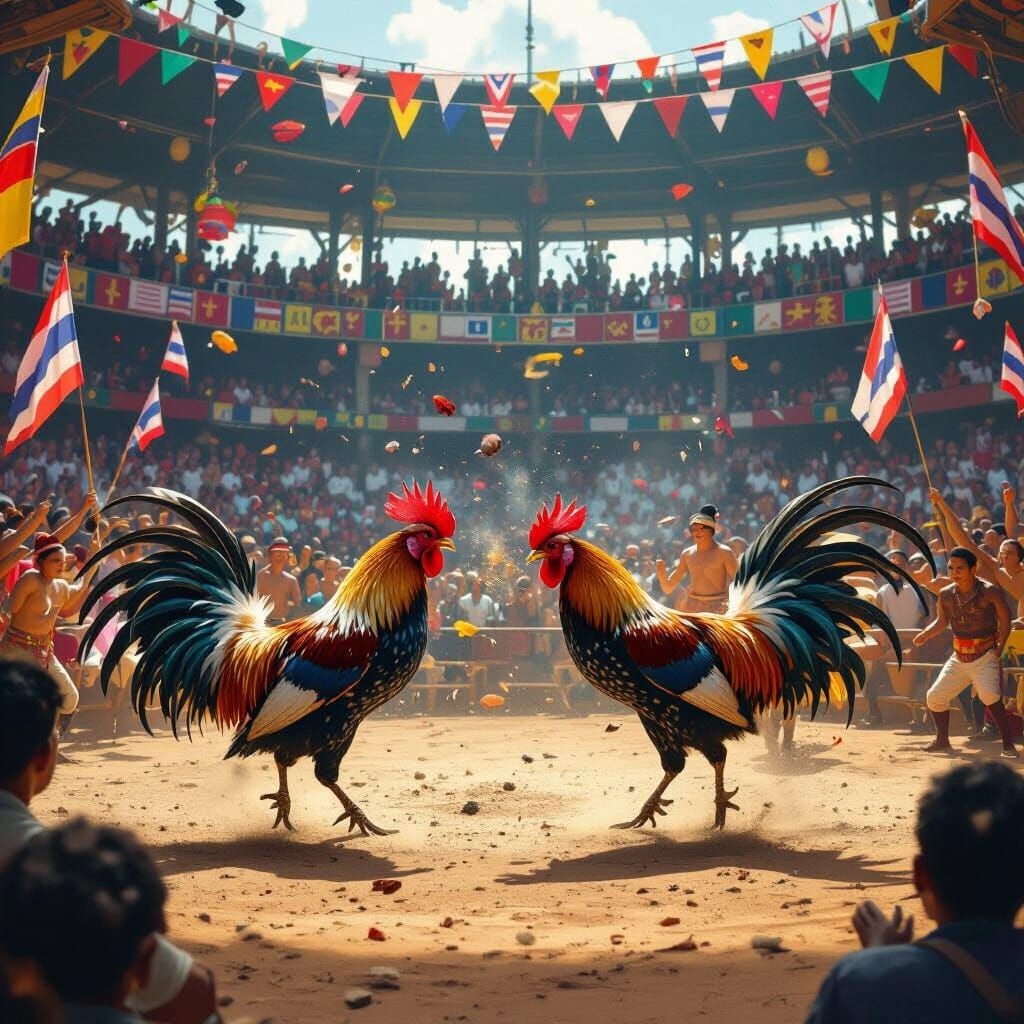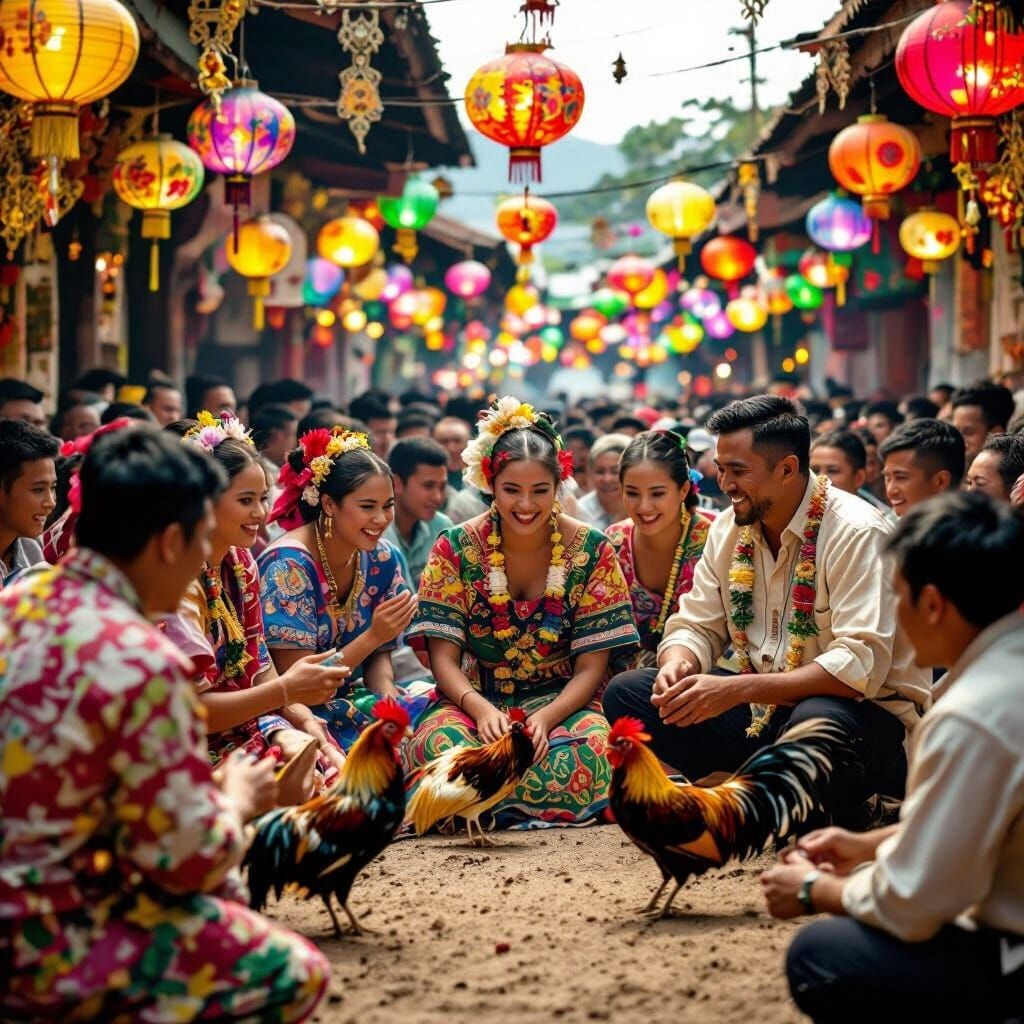Asian Cockfighting History is an inseparable part of the traditional cultural identity of many nations across the continent. This sport is far more than just a competition between roosters—it is deeply embedded in the cultural, religious, and spiritual practices of various Asian societies. Join Sabong International as we explore the rich history of Asian cockfighting, the origins of this age-old sport, and how it has evolved over centuries to become a cultural symbol in many parts of Asia.
Asian cockfighting history: Origins and early beginnings

The roots of Asian Cockfighting History can be traced back to the earliest ancient civilizations. Based on historical and archaeological records, cockfighting is believed to have first emerged in India during the Vedic period, which spanned from approximately 1500 to 500 BCE. While no single historical document pinpoints the exact moment this sport came into being, various relics and ancient texts confirm that cockfighting became an integral aspect of the cultural fabric in many Asian societies over time.
What makes the Asian Cockfighting History particularly fascinating is how deeply it was woven into early Indian civilization. Archaeological findings and ancient scriptures alike provide compelling evidence that cockfighting was far more than mere sport; it was a cultural phenomenon. The early existence of this sport laid the foundation for its widespread adoption across the region, growing into a tradition that has survived through centuries.
The role of cockfighting in indian culture and belief systems
Asian Cockfighting History highlights India as the birthplace of this unique form of combat sport, where it was closely linked with spiritual and religious practices. In ancient Indian culture, cockfighting was not merely seen as a source of amusement or competition—it carried strong symbolic meanings and was often conducted as part of sacred rituals to honor deities. These events were a means of forging a symbolic connection between human beings and the divine, bridging the physical and spiritual worlds through ritualistic combat.
In India, cockfighting was typically organized during major festivals, where the roosters were raised and trained with utmost care from a very young age. These birds were not bred for consumption or display; they were warriors, cultivated specifically for their strength, courage, and ability to fight. Historical records consistently show that Indian gamecocks received special attention, reflecting a broader cultural admiration for qualities such as bravery and resilience—traits that the rooster came to represent in many ancient Indian communities.
This reverence for the animal reveals the multifaceted nature of cockfighting in Indian tradition. It was at once a test of physical prowess and a spiritual expression of strength, sacrifice, and divine will.
The spread of cockfighting across asian nations

From its early roots in India, Asian Cockfighting History shows how the practice rapidly expanded to neighboring countries, including China, Thailand, Indonesia, and Vietnam. Over time, cockfighting evolved from a regional custom into a widespread tradition that resonated deeply within the cultural identities of multiple Asian nations. Each society adopted and adapted the sport to reflect their own beliefs, rituals, and values—transforming it into a culturally significant activity that extended beyond mere entertainment.
As cockfighting spread, it evolved not just in terms of format or rules, but in its societal importance. In many Asian countries, cockfighting became a communal event, bringing people together and acting as a social glue that strengthened bonds within communities. Whether it was held during local festivals or state-sponsored events, cockfighting developed into a sport that was as much about collective identity and cultural continuity as it was about individual competition.
Asian cockfighting history as a cultural heritage
Asian Cockfighting History is not simply a chronicle of an unusual sport—it represents an essential component of the cultural heritage of many Asian countries. From divine worship to grassroots entertainment, cockfighting has left an indelible mark on the spiritual and social lives of people throughout the region. In villages and cities alike, these events have served as opportunities to celebrate heritage, display bravery, and express communal solidarity through a shared cultural ritual.
The deeper you explore Asian Cockfighting History, the clearer it becomes that cockfighting has always been more than a fight between birds—it has symbolized identity, tradition, and continuity. Its roots in religious rites and community gatherings have ensured that the sport holds a place not just in arenas but also in the hearts and minds of millions across Asia.
Cockfighting in the philippines: a living tradition

Among the countries where Asian Cockfighting History has taken root, the Philippines stands out as a nation where this tradition continues to thrive and evolve. In the Philippines, cockfighting—locally known as Sabung Ayam—is not only a popular pastime but also an enduring symbol of community, tradition, and celebration. These events are held frequently in local arenas and are central to many public festivities, drawing large crowds and fostering a strong sense of camaraderie among participants.
The practice of cockfighting in the Philippines is deeply institutionalized. Gamecocks are bred with precision and trained rigorously to prepare for battle. These birds are treated almost like professional athletes, and major events are often accompanied by energetic betting scenes, adding a layer of excitement and financial stakes to the traditional contest. In larger tournaments, the atmosphere becomes electric, reflecting both the intensity of competition and the fervor of cultural expression.
But the significance of cockfighting in Filipino society goes beyond mere competition and betting. In many traditional festivals, cockfighting serves a sacred role. It is not uncommon for these matches to be held as part of ceremonies meant to honor spiritual beings or as offerings to gods, reflecting an enduring belief in the mystical connections between roosters and divine forces. In this way, cockfighting becomes a ritual of reverence, a testament to the continued blending of ancient belief systems and modern cultural practices.
Cockfighting in Thailand: the resilient thai gamefowl and fiery battles
In Thailand, cockfighting is not only a sport—it is a cultural fixture deeply rooted in the daily lives of the people. The Thai gamefowl, known for its exceptional strength and endurance, has come to represent the nation’s spirit of resilience and fierce determination. These birds are more than just fighters; they are cultural icons that embody the values of courage and competitive spirit cherished by Thai society.
Major cockfighting events in Thailand are often held in grand arenas that attract large crowds of passionate spectators. These occasions serve not only as showcases for skilled trainers to demonstrate their expertise but also as vital social gatherings where people come together to celebrate national heritage. Through such events, the Thai people reinforce their collective identity and honor long-standing traditions that have been passed down through generations. Asian Cockfighting History would not be complete without acknowledging the prominence and vibrancy of Thailand’s cockfighting culture.
Cockfighting in Vietnam: A cornerstone of folk tradition
When discussing Asian Cockfighting History, Vietnam undoubtedly occupies an essential position. As one of the key contributors to the sport’s ongoing development, Vietnam has embraced cockfighting as a deeply embedded component of its traditional culture. Especially in rural areas, cockfighting has long been associated with community celebrations and is considered an integral part of Vietnamese village life.
The sport frequently makes its presence felt during Tet (Lunar New Year) and other major festivals, where it brings energy, excitement, and a celebratory atmosphere to the entire community. These cockfighting events are more than just a form of entertainment—they are occasions that highlight strength, valor, and fighting spirit, while also showcasing the meticulous skills of trainers who prepare the roosters for competition. In Vietnam, cockfighting is a form of cultural performance that reflects both human ingenuity and collective spirit.
Cockfighting in Indonesia: Sabung ayam and spiritual rites
In Indonesia, the practice of cockfighting is deeply intertwined with spirituality, customs, and the everyday lives of various indigenous communities. Sabung Ayam, as it is known locally, goes beyond being a sport—it reflects the harmony between people and nature, as well as their relationship with the spiritual world.
Typically organized within ethnic communities, Sabung Ayam serves a ritualistic purpose. It is often held to pray for abundant harvests, good health, and communal prosperity. The roosters that participate in these matches are trained with great care and are regarded as sacred beings endowed with symbolic power. In this context, cockfighting is not merely about victory or entertainment; it is a sacred act tied to the cycle of life and nature.
In several regions across Indonesia, cockfighting also forms part of ancestral and religious rituals. These events are conducted with deep reverence, where the gamecocks are seen as spiritual warriors representing strength, endurance, and the indomitable human spirit. Their presence in ritual combat signifies a profound connection to ancestral forces and divine entities, underscoring the cultural and mystical significance that cockfighting holds in Indonesian society.
Asian cockfighting history in the digital era

With the rapid advancement of technology, Asian Cockfighting History has entered a new chapter. The sport has transcended traditional arenas and found a powerful platform online, enabling participants and enthusiasts to engage from anywhere in the world with just an internet connection. This digital transformation has not only preserved the cultural essence of cockfighting but also expanded its reach to a global audience.
One of the most prominent platforms in this movement is Online Sabong, where members can stream live matches, place bets, and connect with fellow enthusiasts in real-time. The platform distinguishes itself through its high-quality livestreams, user-friendly interface, and secure betting system, offering users a dynamic and immersive experience. Online Sabong represents the cutting edge of modern cockfighting, merging tradition with innovation.
This evolution of online cockfighting plays a critical role in both preserving and promoting the cultural value of the sport. It opens new opportunities for participation and community building among cockfighting fans worldwide. As a result, what was once a localized cultural activity has now become part of a broader digital lifestyle, bridging heritage and modernity.
Conclude
Asian Cockfighting History thus stands as a powerful testament to how tradition, culture, and community can adapt and thrive in changing times. It affirms that cockfighting, despite its ancient roots, continues to captivate and unite people across borders, offering not only entertainment but also a deep sense of identity and shared experience. No matter the medium—be it ancient ritual or modern livestream—the spirit of cockfighting endures as a vital force within the cultural fabric of Asia.
